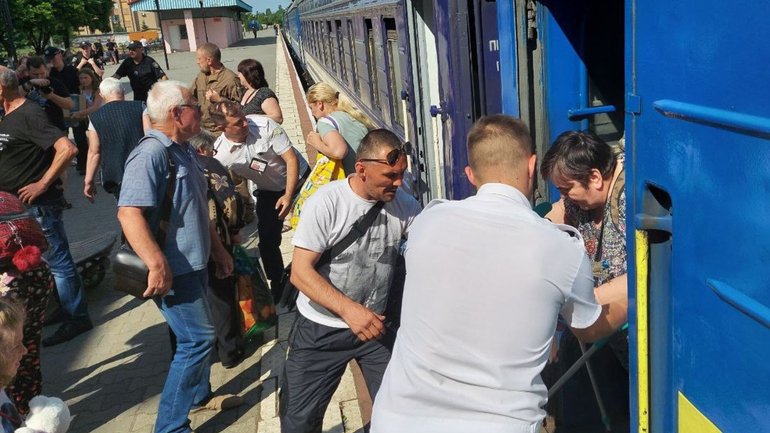"Caritas" provides assistance to victims of the dam destruction at the Kakhovka Hydroelectric Power Station

Employees of "Caritas-Mykolaiv" greeted the first train that arrived from Kherson. Currently, the number of evacuated individuals is still limited as the affected population hesitates to leave their homes. The official website of Caritas Ukraine reports.
"People who arrived took the essentials, but most of them do not know where they will stay. However, our assistance is not only of an emergency nature; the charitable foundation is ready to support the displaced persons even if they remain in Mykolaiv. We are prepared to provide food packages and psychological, legal, and financial support to those who have become victims of Russian aggression and suffered from flooding," stated "Caritas-Mykolaiv." The "Caritas-Kryvyi Rih" team is already delivering drinking water to the flooded areas.
After the water level recedes, there will be an urgent need to address the issue of limited access to drinking water in the entire region, both upstream and downstream. Ensuring access to safe and sufficient water resources will be extremely important in our relief efforts.
As Fr Ivan Talaiko, director of "Caritas-Kryvyi Rih," notes, the need for drinking water will become relevant even for the city itself, as Kryvyi Rih's drinking water was supplied from the Kakhovka reservoir.
As reported, on June 6, the dam at Kakhovka reservoir was destroyed by the occupiers, causing a rapid influx of water and flooding areas downstream. Villages, settlements, and cities along the Dnipro River banks have been submerged. Surrounding cities have become uninhabitable, and the urgency of evacuation has intensified. Due to the ebb and flow of the flood, the problem of shifting minefields will also worsen, which displaces the water flow.
According to preliminary estimates, 17,000 people residing in high-risk areas require support through evacuation or assistance on-site.
First-response support is needed, including hygiene and water, shelter, and psychosocial support.









